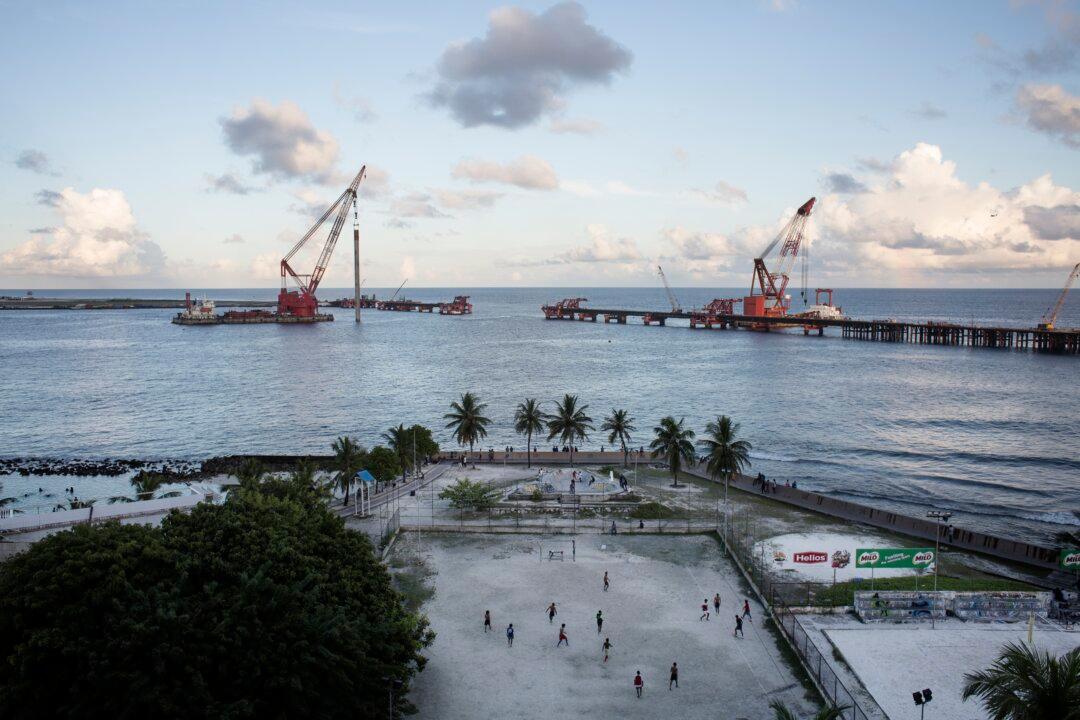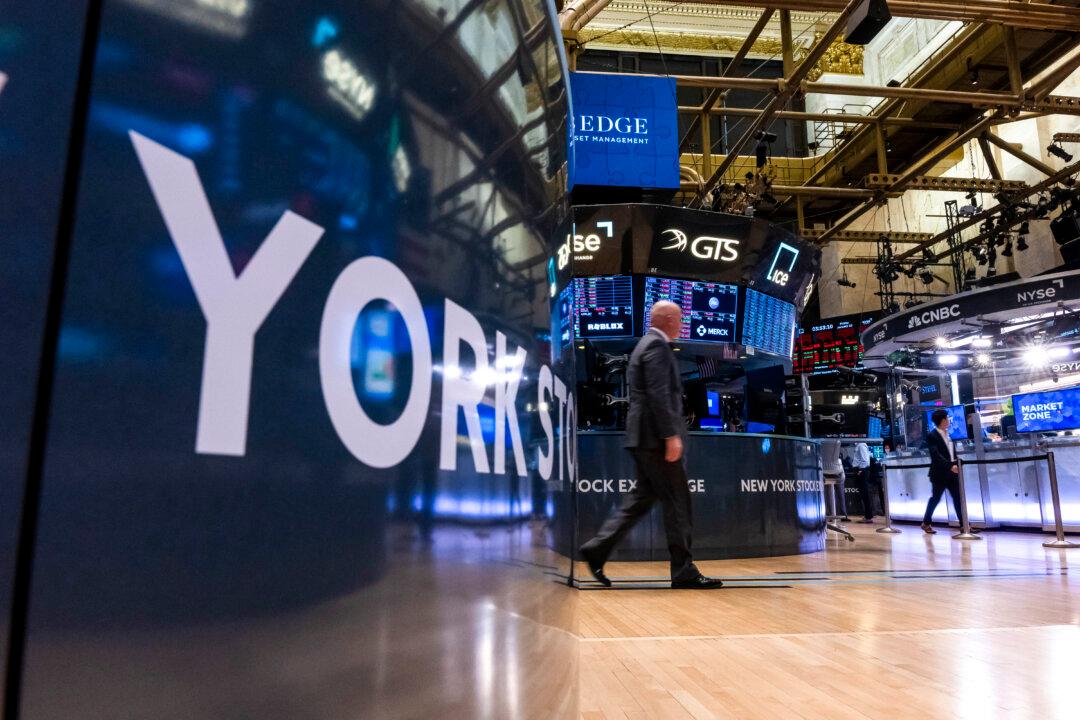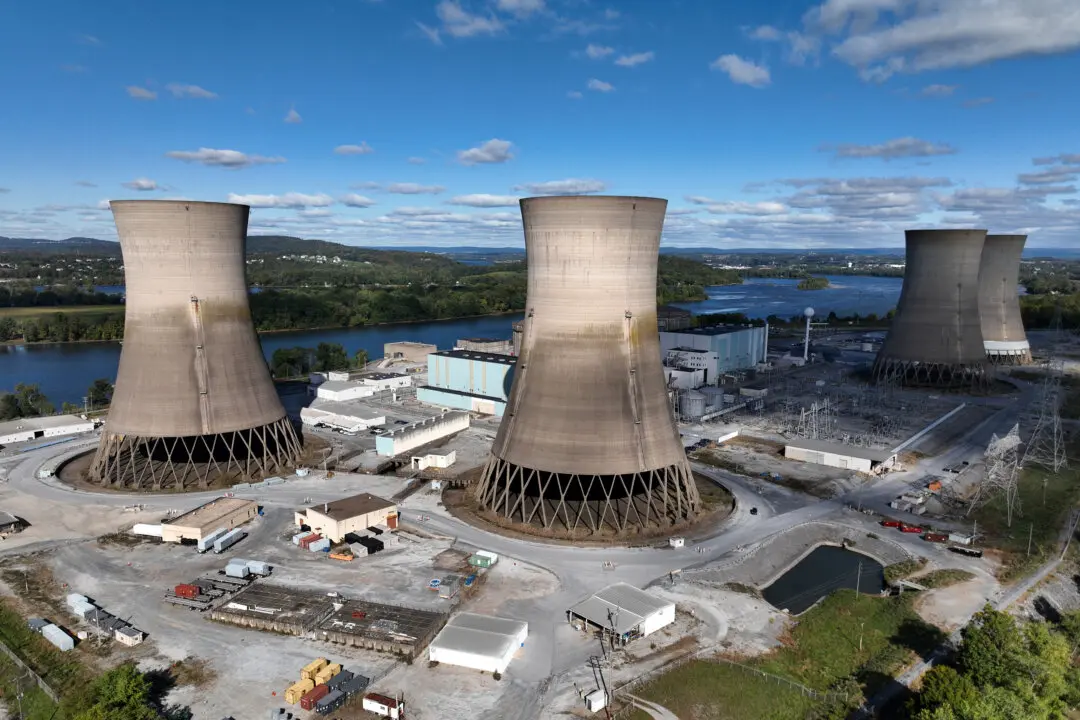After Sri Lanka and Pakistan, the Maldives are beginning to see the dark side of Chinese investments: A debt trap that could cost the country its economic independence. The tiny Indian Ocean nation owes China a huge debt and is striving to repay it.
China’s ties with the Maldives began the usual way: Beijing invested heavily in building the island’s infrastructure, with Chinese state-owned contractors designing and executing high-profile projects financed by Chinese state-owned banks.
On the surface, these investments are a great deal for both parties. For the Maldives, they help build its infrastructure, a necessary condition for developing and integrating its economy, while creating jobs and income for the locals involved in the construction projects.
For China, these investments help execute Beijing’s Belt and Road Initiative (BRI, also known as “One Belt, One Road”), an ambitious plan to advance the Chinese regime’s interests in Asia, Europe, and Africa. A Chinese-funded infrastructure could eventually serve as another military outpost in the Indian Ocean and turn it into the “China Ocean,” surrounding Beijing’s old adversary, India.
“The most crucial element in the close ties between the two countries is that Maldives is at the cross-seaways of Chinese trade routes,” Yiannis Tsinas, a former Washington military diplomacy analyst, told The Epoch Times. “One of these seaways leads to the Middle East, where China imports a large chunk of its oil.”
Tsinas sees these close ties between the two countries as an upgrade to China’s military presence in the region. “Beijing can cut potential naval cooperation between India and Japan and be a step closer to containing India’s presence in the area.”
In addition, the Chinese regime could turn Maldives, a member of India’s free trade zones, into a transit trade post for Chinese products on their way to India.
On closer examination, these investments are great for China but not for the Maldives, for the usual reasons. One is that the infrastructure projects are designed and executed by Chinese contractors rather than international contractors following competitive bidding. These contractors use political rather than economic criteria in performing feasibility studies, placing Chinese bureaucrats’ priorities ahead of the Maldives economy’s needs.
As a result, some projects cost too much and serve too few consumers to be economically viable.
Another reason they are even less viable is that financing comes from loans from Chinese state-owned banks under conditions too binding for the Maldives to afford—that’s when the loans become “debt traps,” advancing Beijing’s hidden agenda.
That’s a red flag for debt-rating agencies, which had closely monitored the situation. For instance, in August 2024, Fitch Ratings downgraded the country’s debt to “CC,” a “junk” high-risk status.
“The downgrade of the Maldives’ IDRs to ‘CC’ reflects Fitch’s assessment that intensified pressures from the country’s recently deteriorating external financing and liquidity metrics have made a default event more likely within the rating horizon,” said Fitch.
“This is underscored by a recent material decline in the foreign-reserve buffers alongside elevated external debt service and limited external financing inflows.”
Fitch’s downgrade makes it hard for the country to borrow funds in international markets to pay for a $500 million sukuk, a bond that claims to comply with Islamic Shariah law.
“The borrowers must accept scrutiny if they decide to borrow from the IMF. As a result, the essential projects for national welfare (like BRI projects) might need to be given up, and industrial development might be disturbed by the IMF’s dictation,” Liu wrote.
The hard place is China, which may provide new loans to Maldives at even more stringent conditions or swap debt for equity, transferring control of critical infrastructure to Beijing, as was the case with Sri Lanka.
However, that won’t be an easy solution, as China and the IMF/World Bank will have to negotiate ultimate control over the projects that are part of the BRI.
“Chinese state-owned enterprises are currently arranging all BRI projects,” Liu said.
“If other international institutions join the funding of the BRI projects, these institutions will have to share voting rights with the Chinese SOEs [state-owned enterprises]. In terms of the decision-making process, it is unnecessary and goes against the wills of the Chinese SOEs to give up the dominance over the projects.”







